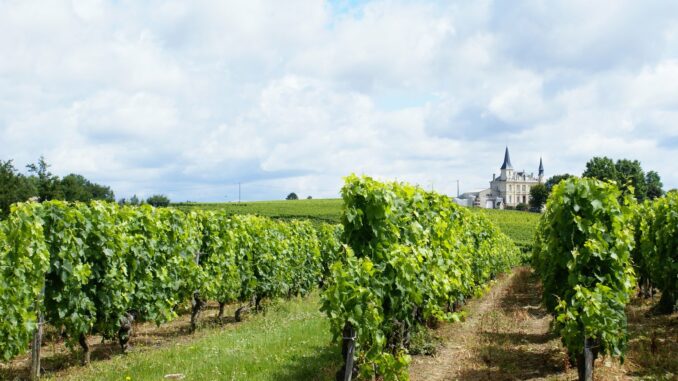
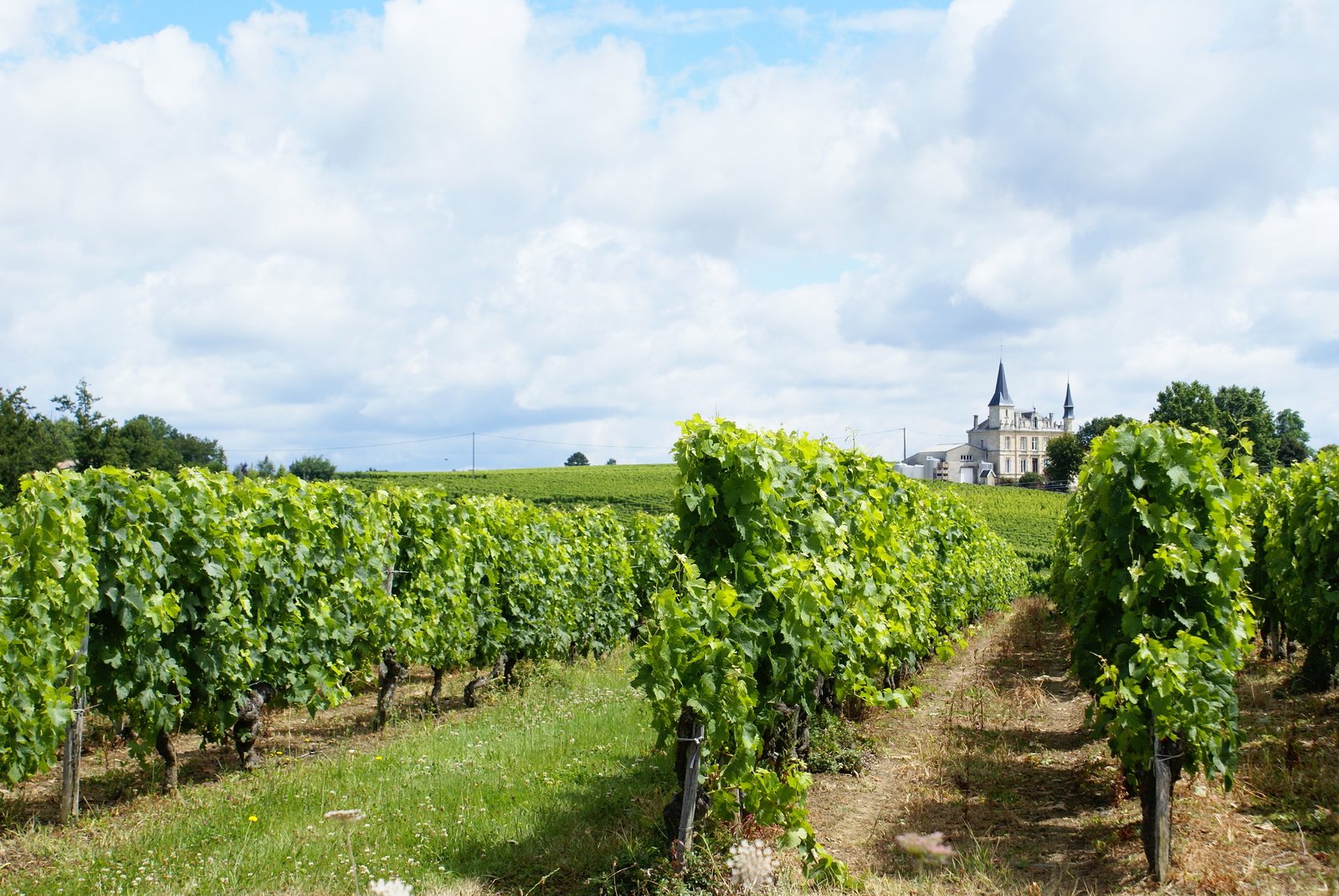
Atlantic Ocean borders west; Bordeaux itself, split by the Gironde River.
Only FIVE varietals are allowed in Bordeaux: Cab Franc, Cab Sauv, Malbec (or Carmenere), Merlot, Petit Verdot. The French don’t allow varietal labeling; and if a red involves (less than two/ more than five) from that list, it can’t be called Bordeaux.
Topography breaks into appellations/ micro-appellations in a ‘U’ around the River. Starting right, moving left…
Areas with Côtes in the name mean “hilly.” Fertile soils keep vines from working too hard. Pretty villages; solid table wines: ($8-20 per bottle ‘finds’ of varying quality.) Real gems if one researches.
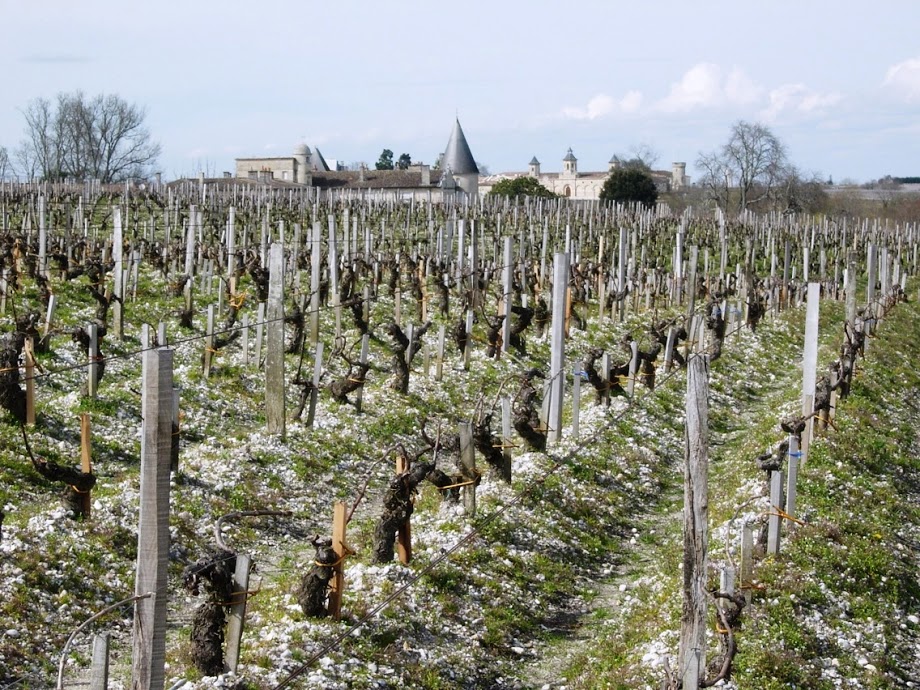
The two Fronsacs sport Merlot/Cab Franc-heavy blends ranging ho-hum to mind-blowing. With luck, yummies run half the price of St. Emilion and Pomerol. (All four are located around the bottom of the Gironde.)
- St. Emilion –Three classifications, in order: Premier Grand Cru Classé [two ‘A’ & the rest ‘B’]; then Grand Cru Classé; then Grand Cru.
- Pomerol – Unclassified, but home of famous opulent Ch. Petrus. (Dominus family in Napa, CA.)
Best southern regions:
Barsac, Sauternes: specialists of ‘noble rot’ dessert wine (sweeties—per my Aussie mates.) Morning mists and summer humidity are ideal for botrytis cinerea fungus to dehydrate mostly Sémillon, some Sauv Blanc grapes, raisin-style. Decadent, honey-flavored/textured elixirs, result. (I’m obviously a fan. Add gorgonzola, candied walnuts; shut the door; santé and fais de beaux rêves!)
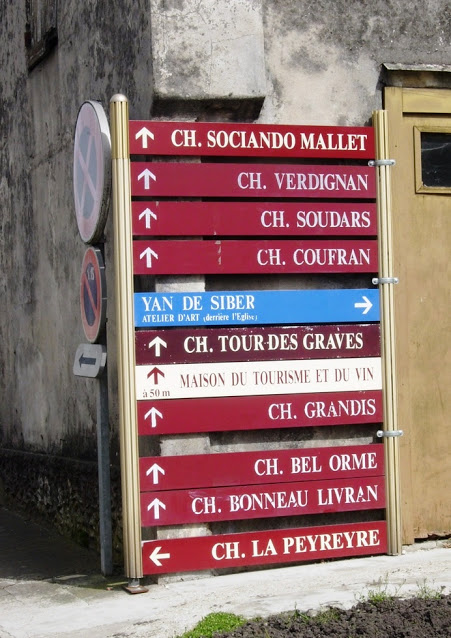
Graves: (‘Ahhh’, the ‘S’, silent.) Word association: gravel—because rocky soils make the most interesting wines. The celebrated Haut-Brion, plus the region’s best whites hail from here.
Onto the Gironde’s left bank: Médoc: communes and a unique rating system
Always intending to visit Bordeaux, we arrived on a whim, not a plan—ignoring the pitfalls of this idea. March is not quite ‘happening’ yet; many local shops board up all winter. Another snag: the Premier Crus were sealed tight in focused preparation for the following week’s priority, en primeur. Translated: Premier Week, an annual Spring event when VIP wine journalists, critics, and futures-buyers determine the worthiness of the current year’s lot.
Luckily, it was Open Door weekend, when chateaux (castles elsewhere, wineries here) host tasting events and tours. Our B&B proprietor finagled a couple invites, and once we were ‘in’, industry street cred parlayed into fortuitous introductions. (We were lucky; California’s wine industry is a curious intrigue in these parts.)
For starters, it helps to know the classifications of Médoc wines:
- Premier Cru = First growth (best); Deuxièmes Cru = Second growth… all the way up to Cinqième/Fifth.
- Based on Napoleon’s 1855 Paris Exhibition, when the Bordeaux Chamber of Commerce sorted 60 Médoc estates’ wines (+ Graves’ lone Haut-Brion) roughly by price, therefore assumed, ‘quality’.
- Does not include Médoc’s 200+ other Crus Bourgeois—a classification meaning, of all things, ‘Unclassified’.
Theoretically, an 1855 Premier Cru may have slipped since then, and a Cinqièmes Cru (fifth growth) may have considerably improved. Also, the best Crus Bourgeois surpass some 4th & 5th Growths; and we haven’t even covered Super Seconds –wineries’ second labels. (Many are superior.) This (politically-charged, potentially arbitrary) system annoys anyone not designated a First or Second Growth; so, best to enjoy tasting and choose your own favorites.
Anyway, soldiering on off-season, we tasted some damn good Médocs, found great restaurants; enjoyed a variety of villages; and squeezed in a day-trip to the beach town Lacanau, (an uncanny 90’s-Hermosa-Beach-CA-throwback.)
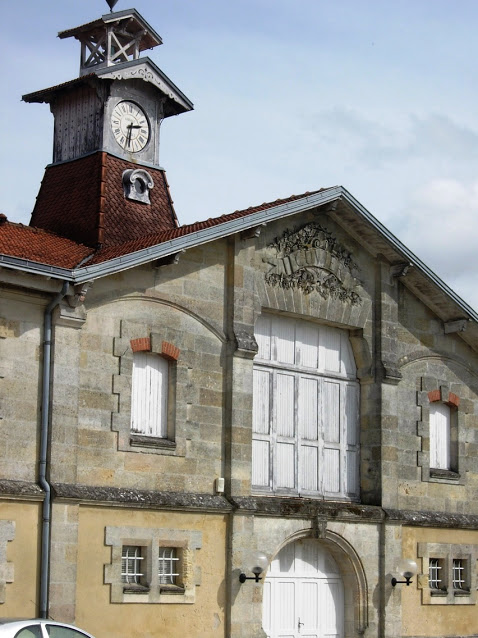
Bordeaux Tips
Lease a car. Driving is easy (and fun to get lost.)
VILLAGES are inside COMMUNES. Often, maps only show communes (larger towns). For an idea, search Pauillac online. Zoom into map until lighter-font, all-caps villages appear. Now you get the idea. Also, complicated road signs point the way to actual destinations within the villages–not the villages themselves. Best advice: get a car with Nav. Your US phone (and map translators) will be unreliable.
*When looking up any place, you want the Gironde & Aquitaine choices.*
Key words:Weekdays & By Appointment. Not always, but safest bet. Set up two destinations to bookend your day… wing everything between. ‘Stumble-upons’ make memorable experiences.
Note: A sensitive subject/ no easy way to broach it: many top chateaux have been acquired by enthusiastic Asian investors. Great for business, but local employees lament historical, opulent and entertaining areas of chateaux are becoming off-limits, even to them. Add-in a growing trend to mirror commercial practices of the US wine industry, you will probably experience a hybrid mash-up of Old School and New School: wise to remain impartial.
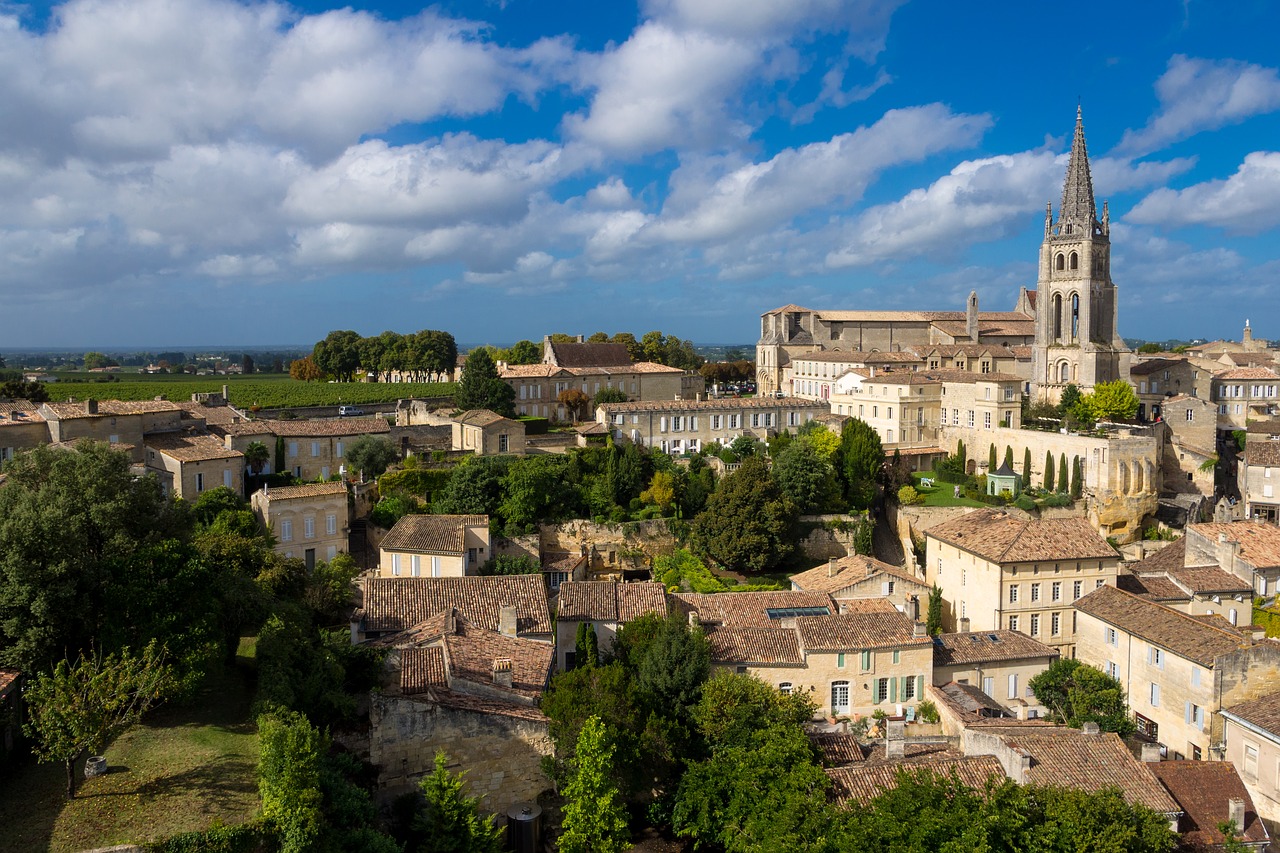
Bordeaux Highlights
Our Home base: Lou Bercail, a B&B in Pauillac, serving the best croissants in France from the village bakery and run by Dany Hauselmann and painter/ husband, Patrick. We went to many excellent Pauillac wineries.
Pauillac is home to another of our favorite winery experiences, Ch. Lynch-Bages; complete with built-in gourmand village and an exclusive setting for those inclined to stay.
Margaux– Ch. Margaux was unavailable, but we managed 3+ great ones with ‘Cantenac’ in the Ch. names, (not the commune.)
St. Julien– Ch. Lagrange offered a wonderful tasting and tour; wines were deelish. Felt right at home.
St Estephe – The baroque St. Etienne church & Ch. Cos d’Estournel are gorgeous
Saint Yzans de Médoc – Ch. Loudenne great wines, gorgeous property—they also have a rustic exhibit of ancient wine tools and artifacts in the basement.
Santé!
Lori Stevens, former wine magazine food editor has worked for wineries and traveled extensively through most of the world’s wine, craft beer, cider, and scotch-producing regions. Author of Wine: A No Snob Guide: Drink Outside the Box, Berkeley: Rockridge Press, 2015; she currently lives in Seattle.
